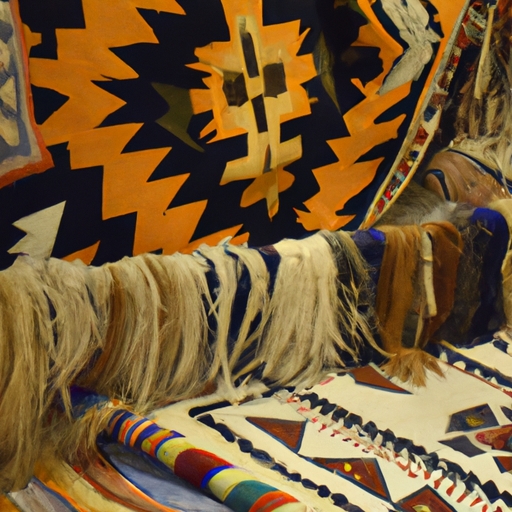
Navajo Weaving is an (intricate) art form that has been practiced for centuries by the Indigenous people of North America. It's a traditional craft that produces beautiful and intricate pieces, often with earthy colors and textures. It can be used to create anything from blankets and rugs to clothing and jewelry! Learning the basics of this ancient technique can open up a whole new world of possibilities for any creative individual.
First, it's important to understand how Navajo weaving works. The process starts with spinning the yarn in order to prepare it for weaving. This yarn is then dyed with natural dyes derived from plants or animals found in the area. Once this step is done, weavers will use special tools such as looms and spindles to begin creating their designs. Through a series of looping threads over one another, they are able to create patterns that have become iconic symbols in Native American culture.
Moreover, Navajo Weaving isn't just about making things look good; it also has spiritual significance within its community. Because each piece takes so much time and effort to make, Navajo Weavers often imbue them with prayers and intentions - thus connecting them with something greater than themselves! They believe that when you weave something with love and dedication, you are creating harmony between yourself and nature.
Overall, Introduction to Navajo Weaving offers a unique opportunity for anyone curious about exploring traditional Native American arts & crafts! With patience and practice, you too can learn how to incorporate spiritual symbolism into your own work - creating items which not only look amazing but also feel meaningful! After all, there's no better way than this ancient form of weaving to truly get in touch with your creative side!

Navajo Weaving is an ancient art form that has been passed down through generations of native people in the Southwest United States. It's a unique and beautiful way of creating fabric with natural materials like wool and cotton, as well as other traditional fibers. The History of Navajo Weaving dates back hundreds of years to when the tribe first settled in what is now Arizona, New Mexico and parts of Colorado. (It) was and still is used for making a variety of items including rugs, blankets, bags, clothing and more!
The process begins with carding or combing the material to make it smooth before spinning it into threads. Then these threads are woven together on a loom using different techniques such as twining, knotting or interlocking. Every piece made by hand is truly unique due to its intricate patterns created from this weaving technique. Moreover, each design typically has spiritual significance which further distinguishes them from others.
Moreover, over time Navajo Weavers have adapted their work to fit changing trends and styles to meet customer demand. For example they started incorporating synthetic dyes into their designs to create more vibrant colors than could be achieved with natural dyes alone. Additionally they also began producing pieces for commercial markets rather than just for ceremonial purposes. In this way Navajo weaving continues to evolve while still maintaining its traditional roots!
In conclusion, Navajo Weaving is an incredibly important part of history that provides insight into how native people lived centuries ago. As a result it remains highly sought after today both for its stunning beauty as well as cultural significance! Indeed it's an amazing accomplishment that will likely remain treasured for many years yet come!
